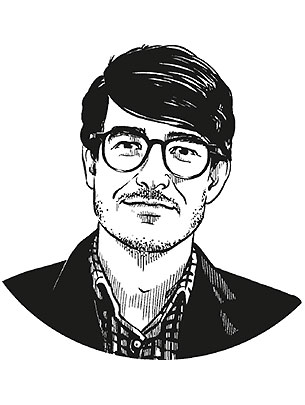The model-like nature of images
Text: Karen N. Gerig
When we look at an image, we are influenced by what we already know. Art theorist Markus Klammer investigates how images work, and the role that models play in this process.
Long before humans learned to write, they created images. Hunting scenes painted on cave walls survive to this day, although we know little about how or why they came into being. Even so, they allow a number of conclusions to be drawn: the fact that people used to go hunting, which species of animals existed at the time, which ones people hunted, and the weapons they used.
But were the paintings intended as a how-to guide? Or were they a storytelling device for children? We know virtually nothing about their context. However, when reading an image, our frame of reference is crucial. Images are invariably perceived through the lens of specific, historically and culturally conditioned prior knowledge. Context plays a part in determining what an image represents, and the liberties we can take when interpreting it.
Dreams and the unconscious
Accordingly, context is a key aspect of Markus Klammer’s research. For a number of years, the deputy director of eikones and Schaulager Professor of Art Theory at the University of Basel has been investigating how images work by focusing on their model-like nature. Back in 2010, he wrote his doctoral thesis on the function of images in Freudian psychoanalysis. Freud regarded dreams as images – hallucinatory fragments of perception assembled by unconscious desires.
What is more, he employed images as models to explain the inner workings of the unconscious itself, such as the Mystic Writing Pad, a toy consisting of a wax block covered by a transparent sheet. When drawn on, the sheet is pressed lightly into the wax, making the lines visible. Lifting the sheet causes the traces to disappear, even though the impressions remain in the wax block. In Freud’s analogy, the wax represents the unconscious, in which past impressions have been engraved, but are no longer visible at the surface.
This topic is what led Klammer to his current research. He believes models are indispensable in shining a light on complex issues. “Models explain the world to us: They help us grasp complex situations by reducing them to their essential elements. Models always serve specific goals and purposes,” he explains, listing examples from everyday life: mathematical diagrams, physical models of the atom, but also social stereotypes and political symbols.
In art history, models are found in the form of images that belong to a canon because they are considered to be representative of a particular style, for instance. Over the course of history, the various canons are constantly renegotiated: “Over and over, we rearrange series, groups and constellations of artworks according to which ones we regard as models.”
Sensory excess
Images have a special place among models, as they do more than just illustrate complicated issues. “Images are loaded with sensory excess,” says Klammer. “As models, they have the potential to reveal more than intended.” Whereas in a technical diagram, for instance, the color used is largely irrelevant, in a painting every detail matters, and is open to a particular interpretation.
And how should this excess be dealt with? “It offers us a certain amount of freedom,” says Klammer. “By allowing different interpretations, it gives us the opportunity to discover aspects which had not previously been seen, or were not deliberately intended.”
The philosopher Roland Barthes proposed a “third meaning” of images, suggesting that in addition to an image’s intended message and culturally codified symbolic content, there is a third, specifically visual level of communication that is transverse to and indeed often in conflict with the others. By way of example, Klammer cites a photograph of the current US president pointing into a crowd with his finger: “First of all, we see Donald Trump the person. Then we see the forceful poise of a president. Finally, we can interpret the pointed finger as an authoritarian gesture that gives away more than is intended.”
Here too, prior knowledge plays a crucial role. Both the image’s function as a model and the range of possible interpretations are dependent on context. “I am interested in the circumstances which limit an image’s depth of meaning,” says Klammer, “and, conversely, in how it can be expanded.” To this end, he researches the structures whereby models are formed. “That sounds somewhat abstract at first,” he says. “But basic research is important – images science needs a methodological foundation.”
Models as perspectives
It is to this methodological framework that Klammer hopes to contribute. He plans to demonstrate how “good models” show that they merely provide perspectives, and to offer a tool for critique through his research: “There should always be the possibility of specific contradiction.” Klammer intends his findings to be applied in various disciplines of visual culture, from art theory to the natural sciences.
Further research into images as models will be conducted at eikones in postdoctoral projects in several fields thanks to the involvement of the NOMIS Foundation under the auspices of an international fellowship program. As a result, the possibility to pursue specific projects on the subject of models at the University of Basel will be widely present, and the anthology published by Klammer in collaboration with Andreas Cremonini on the topic is likely to become a core text in the field.
More articles in the current issue of UNI NOVA.

